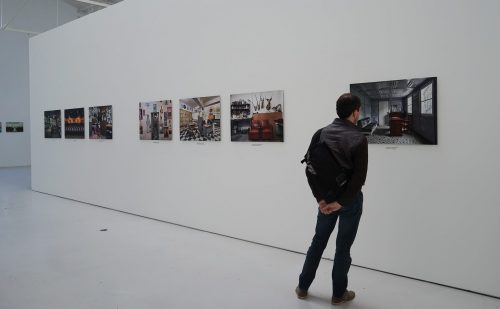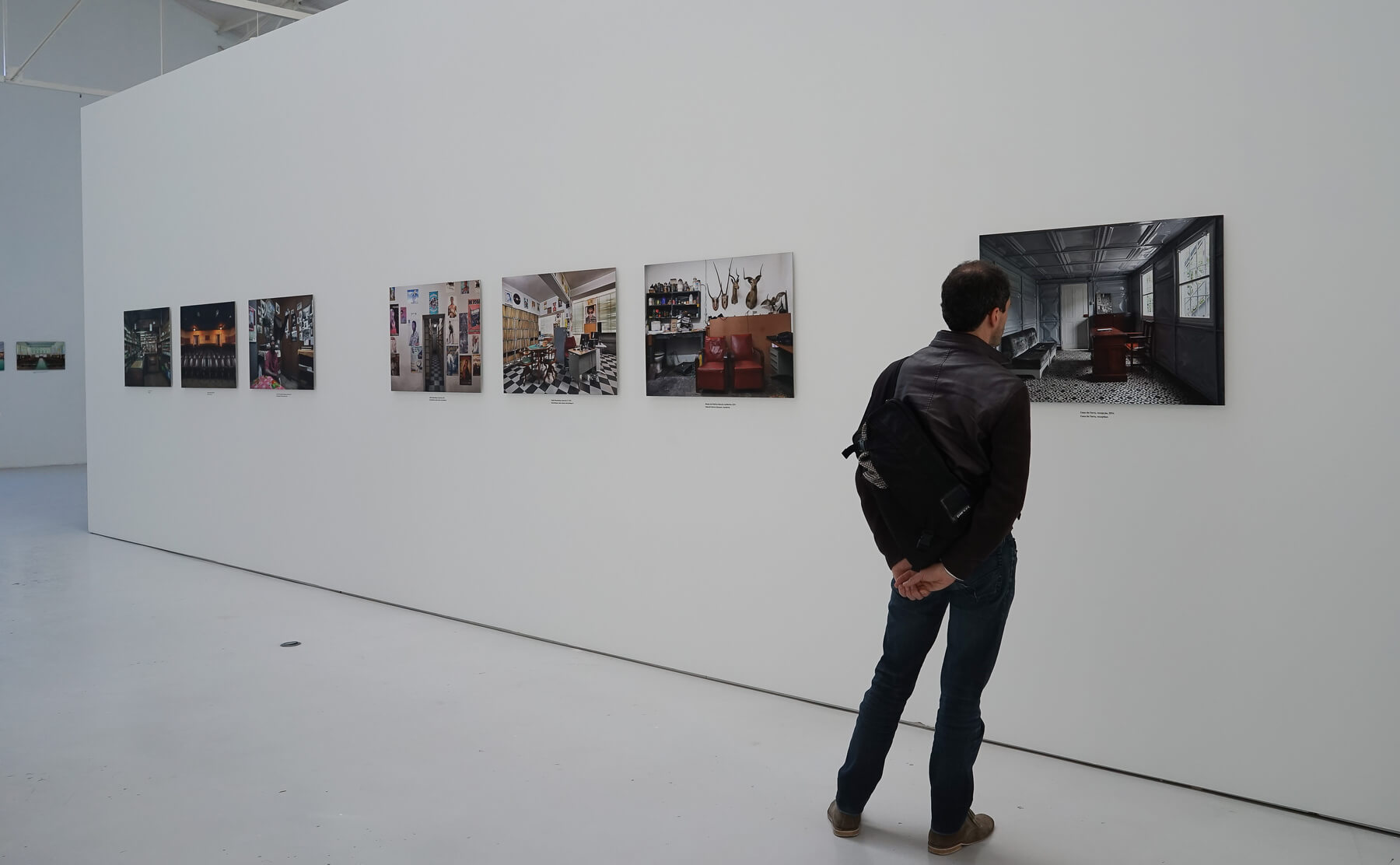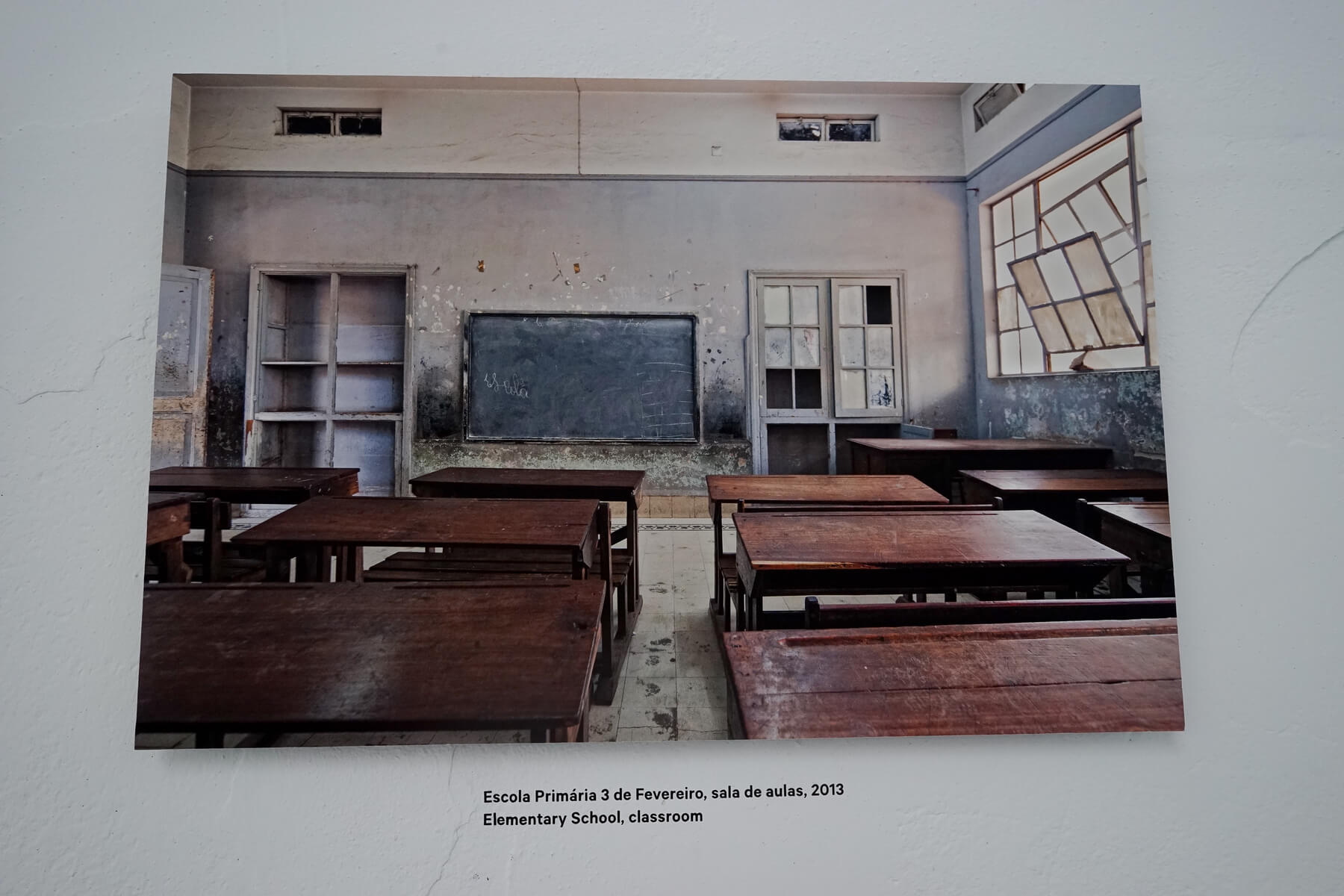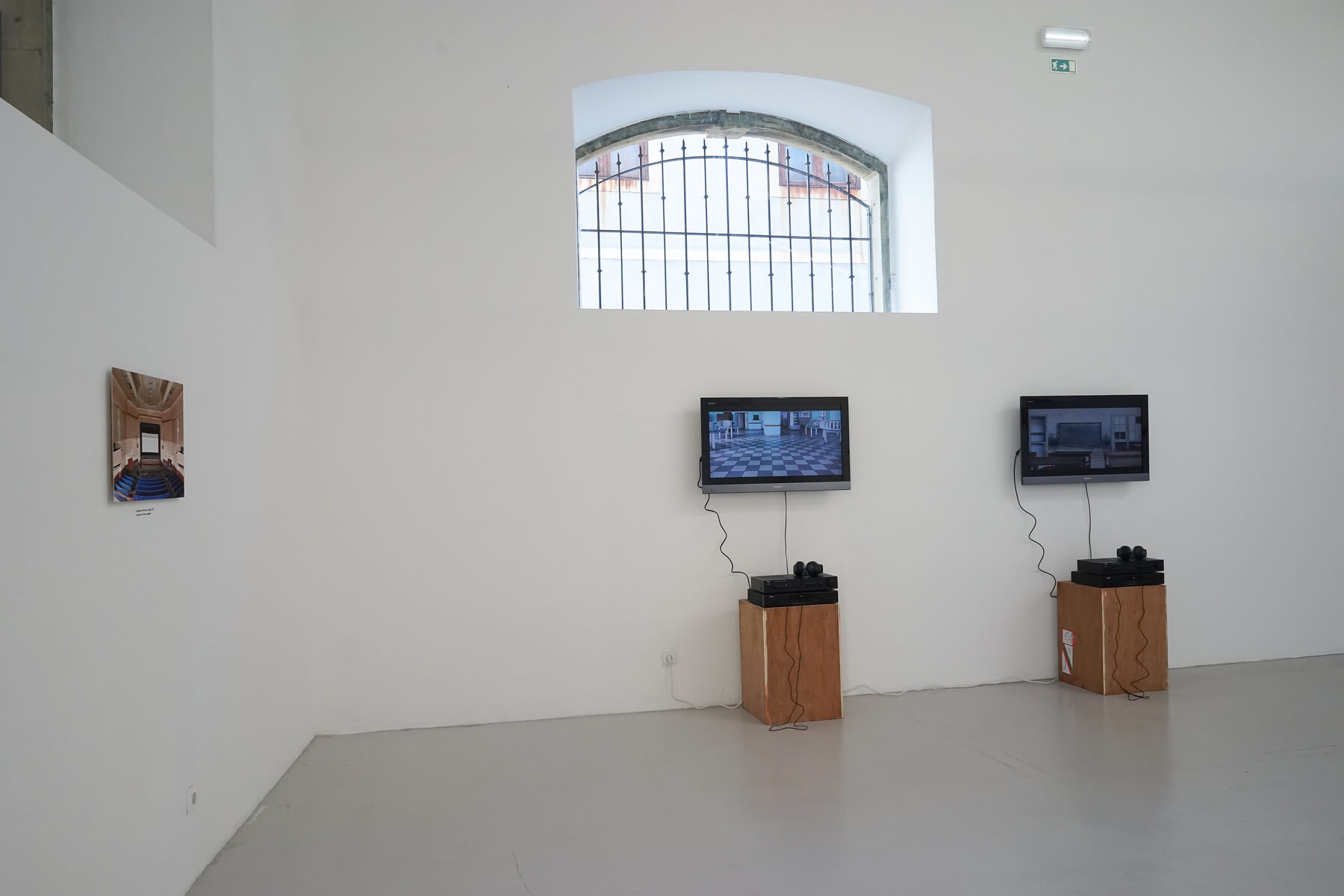– 05.06.2016
With Interior Landscapes, EGEAC continues the programmatic line of Avenida da Índia Gallery which deals with the place of memory. Located in an area of Lisbon that evokes the city’s past, as suggested by the gallery’s name, it’s a space where concepts such as post-colonialism – or, more simply, different intertwined memories of countries and peoples – are dealt with.
Interior Landscapes by Filipe Branquinho doubly fits this context, because it brings Maputo to Lisbon and along with memories of places that evoke the different times and eras of the city. Through a slightly furtive, un-nostalgic lens, we see how are and who uses the schools, cinemas, associations and many other places in today’s Maputo. How they sometimes still summon what was known as Lourenço Marques, but are also very much alive and part of the daily life in the city.
The landscapes we see in this exhibition do take us on an interior journey. The contemporary nature of the photographs, the banality of many of the actions portrayed, contrast with the evoked past and with the emotions that may be triggered in those who have memories of these places.
Maybe this contrast between distance and proximity is what makes this exhibition a particularly good example of what may be gained from looking at the past from within the present, in Maputo as in Lisbon.
– Joana Gomes Cardoso, Chairman of the Board of Directors, EGEAC
Interior Landscapes is Filipe Branquinho’s latest photographic project dedicated to Maputo, the city where he was born, lives and works. At the genesis of the project is the desire of disclosing stories that crossed the city over different times, of those who walk(ed) and inhabit(ed) it, of those who have built and still build it.
Drawing away from a conventional documental record and from attempting to define iconic city buildings, Branquinho proposes a journey through the public and semi-public spaces of the city. The artist focusses on the inside of buildings saturated with traces and crossings, history and clues, a permanent oscillation between present and past that catches the eye. Cinemas, radio stations, associations, archives, schools and swimming pools are revisited, nostalgia-free, by the observing, loving, and pure photographer’s eye.
With Interior Landscapes, Filipe Branquinho proposes a debate about Maputo as a post-colonial African city. A city built daily, in search of answers to aspirations of diffuse modernity. An interstitial record of present memory, opening a debate about the future.
– Alexandra Pinho
The theme, or themes, of this collection is, or are, though not always at first sight, the present of the past.
Each image explores the patina of time in spaces and shapes, environment and materials, colour and light and local urbanity.
Branquinho doesn’t explore these themes through any sentimental or romantic nostalgia, but from a reporter’s point of view and perspective.
The almost total absence of human presence adds to each image the intensity of a deaf, ambiguous, dramatic presence, revealing itself in the illustration and use of the place as if seen by its owner, user or occupier.
The greatest strength of these powerful images comes exactly from what they provide to the observer: the responsibility of becoming part of an imaginary universe… Or of a maybe unimaginable world that will leave the viewer with a perplexity fuelled by the sporadic, random record of a universe of subtle truths, discovered and aligned with a sense that the photographer must make us find: the poetical intensity of the most commonplace, prosaic spaces and moments through which we go, deaf and blind.
It’s in this lesson of sensibility towards the quotidian and commonplace, under the power of bad taste and the novelty of the conventional; this constant alert state towards the most secondary of the surrounding elements, that the underground mastery and the anti-heroic quality of this image sequence resides.
The theme is, here, the process. Not the technical process, nor even the aesthetic one, always indispensable to it, but the process of seeing the world, and how people live and transform it according to their cultures, ages and possibilities and – why not – their way of feeling and adapting it, imposing their symbols on it, the ghosts and fading echoes of their unfulfilled dreams.
– José Forjaz
– 05.06.2016








